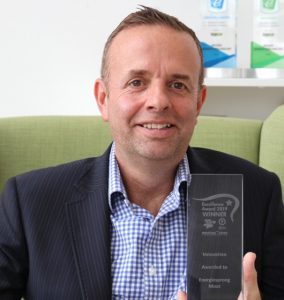
Our Net Zero Journey: Guest Post by Jason Amos
Our Net-Zero Journey
Around three-quarters of housing associations in England have either drawn up plans or are in the process of drawing up plans to become net-zero by 2050, according to new research by the National Housing Federation (NHF).
At the beginning of December, the government set new targets aimed at making the UK carbon neutral, or net-zero, by 2050.
The UK will not meet this deadline unless existing homes are decarbonised and made “greener, warmer, and more efficient”.
Housing contributes around a fifth of all greenhouse gas emissions in the country, largely from the oil and gas used for heating and hot water.
Around 10% of these emissions come from the social housing sector.
As part of the 2050 vision, the government has said it wants to consult on how social housing can be made more energy-efficient, with all social homes upgraded to Energy Performance Certificate (EPC) Band C by 2030 where possible.
‘Retrofit revolution’
Despite progress, housing associations still have concerns about the scale of the retrofit challenge ahead of them.
Responding to the NHF survey, providers said the main barriers for delivering on their net-zero ambitions were concerns about funding and financing, followed by uncertainty over government policy.
It’s estimated that housing associations will need to retrofit around 2.1m homes over the next 30 years. To deliver this, we will need a ‘retrofit revolution’.
Housing associations have started to prepare, but can’t do this alone. We need to work in partnership with the government, residents, local agencies, investors, businesses and each other – if we are to transform our social homes to net-zero by 2050.
Your Aim
Priority 1 – Review all the data you have and look at rolling out a programme of retrofitting your homes with monitoring equipment. A good opportunity would be to do this as a part of another programme i.e. EICR electrical 5 year programmes. Every visit counts!
Priority 2 – To model all your stock using your data and energy software.
Priority 3 – To scope out and take forward a decarbonisation project that looks to provide you with intel to inform your plan to upscale and retrofit your whole portfolio. To meet minimum EPC Band C by 2030 and NetZero by 2050.
Priority 4 – after modelling and prioritising, rolling out the full ‘retrofit programme’ to move all your homes to minimum EPC Band C by 2030 and NetZero by 2050. Using your already installed monitoring equipment to support driving further energy efficiency whilst ensuring the homes continue to perform to the highest standard.
Key Approach:
* Customer Engagement – Opportunity to open dialogue, share vision, capture energy bills, install monitoring and sensors to gather data on energy use, temperature, humidity, hot water consumption, etc.
* Fabric approach first – improving the insulation of walls, roofs and floors in doing so reducing the energy demand for home, but also addressing lighting and ventilation to prevent increased humidity (mould and condensation).
* Heating – decarbonising the heating/renewable with low carbon heating systems, the best solution for the specific home. (no one-fit all solution will work)
* Renewables – generate low carbon electricity on-site
Taking the above approach allows you to truly understand not just the energy data you already have through EPCs, stock condition etc on your homes, but to then gather the data through this new monitoring to understand how each home is actually performing. This in turn will also allow you to identify the resident behaviour and in doing so enabling you to surface those residents that are fuel poor and or in fuel poverty.
Once you have this level of intel you can truly understand what the home requires (asset and resident) regarding interventions and works, thus enabling you to target/prioritise the homes and your residents accordingly.
Wouldn’t it be great if we were able to bring an end to fuel poverty within our generation!

Author: Jason Amos
LinkedIn